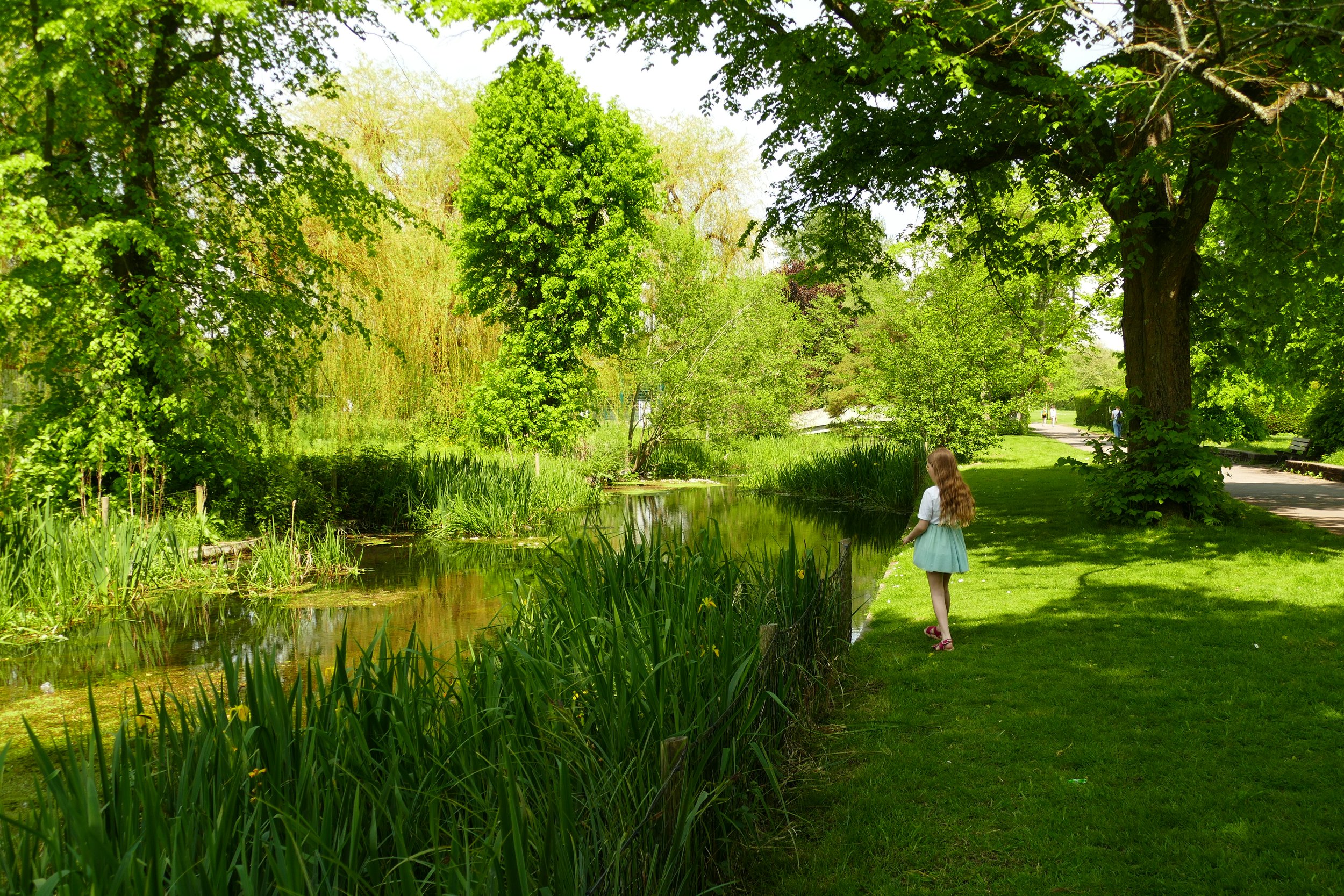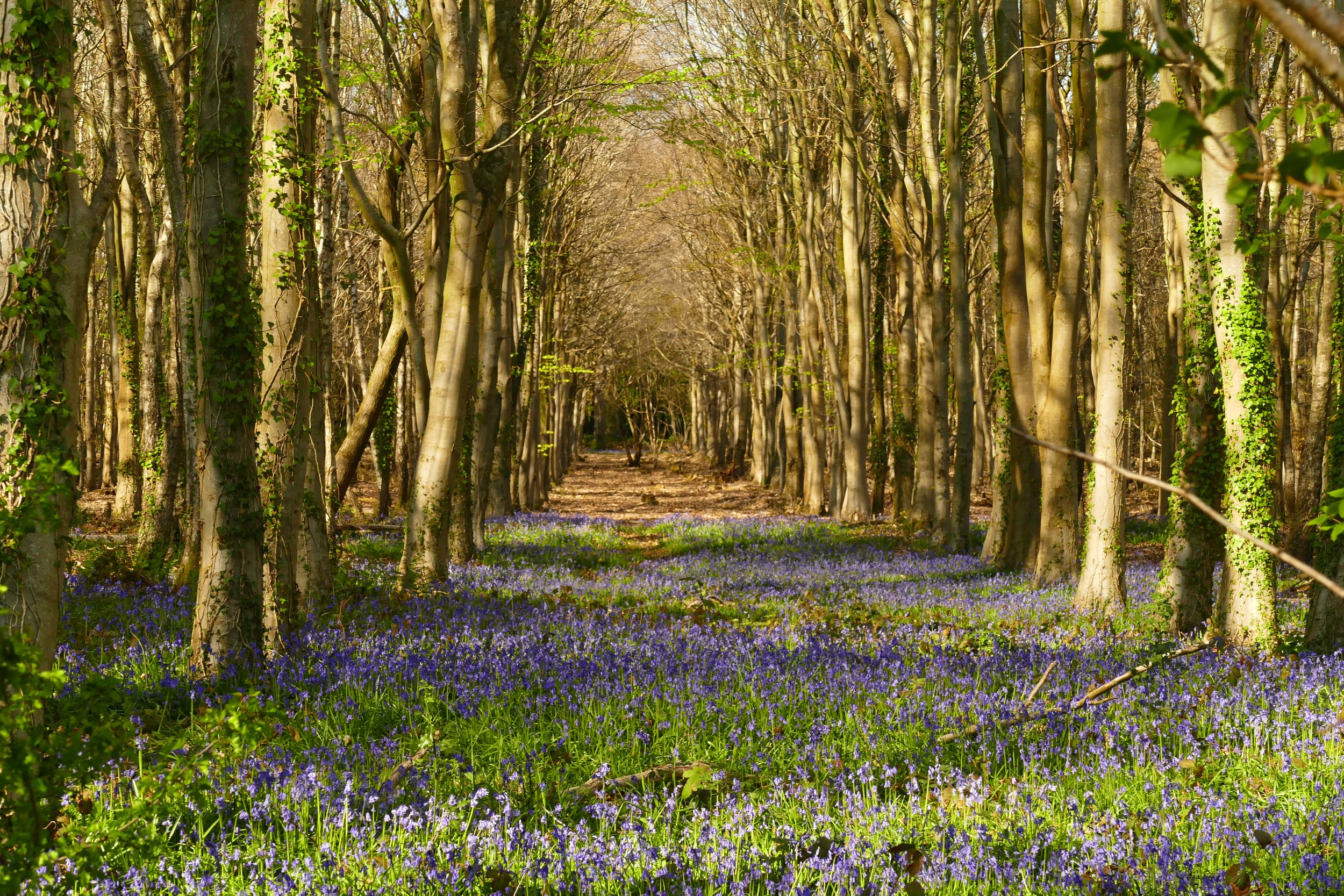Winnal Moors
Winchester
Children will enjoy the story trail, boardwalks, pond and park with a play area on this walk.
A platform overlooking the pond in the nature reserve
The Basics
Time: 30 mins (slightly more if going to the play area)
Distance: 1 mile
Terrain: Flat compacted pathways and boardwalks
Pushchair: Yes
Dogs: No, dogs are not allowed in the nature reserve
Refreshments: The Willow Tree pub with riverside garden is at the start of the walk or bring a picnic and sit by the river in North Walls playing fields
Toilets: Just beyond the play area in North Walls playing fields
Public Transport: Winchester train station is 3/4 mile walk away and the bus station is 1/2 mile walk away
Parking: Durngate pay and display (or Ringo) car park, £0.80 1hour, £1.50 2hours, £2.20 3hours, £2.90 4hours, £7.30 over 4hours, £2 all day on Sundays and free on bank holidays (Postcode: SO23 8DW - W3W: crossword/second/approvals)
Boardwalks through the nature reserve
Just a stone’s throw from the heart of Winchester is this wetland nature reserve, known as the gateway to The River Itchen. The all access pathways take you over reedbeds, past ponds and sections of the river before running parallel to North Walls playing field where you can stop off for a picnic and a play.
The Route
Leave Durngate car park by heading back out towards the road. Turn left and walk along the pavement. In just a few metres, you will come to the point where the river gushes under the road and on your left, you will see the large wooden arch marking the entranceway to Winnal Moors.
Go under the arch and continue straight ahead to the gate. Go through the gate and fork right at the first fork. There is just one easy path to follow along the east side of the reserve and it will take you over boardwalks and along pathways, passing the river and wetland areas. Look out for the ‘secret garden’ as my children called it, where there is a carved bench and a curved boardwalk beside a stream in a little clearing. They loved picnicking here and dipping their toes off the boardwalk into the clear water (swimming is not allowed in the reserve and we did not enter the water).
As the main body of the river comes into view to your right, you will see a section of boardwalk perpendicular to the path going off to your left. This is a ‘short cut’. A longer route would be to go through the next gate and loop around the top section of the reserve. Please note that in May 2024, there is currently no access to the top section as repairs are made to the pathways following winter flooding. Everyone will need to turn left with the short cut until this is fixed.
This section of boardwalk will then bring you to another large body of the river. Turn left here (this is near where the longer, closed route would re-join the path too). In a few metres, you will find a bridge on your right that will take you on an optional excursion into North Walls playing fields. This is a popular place for picnics and feeding the ducks. To find the play area, walk parallel to the river, with the water to your left. When you cannot walk any further in that direction, turn right. You will see a small bridge ahead and the skate park. The play area is opposite this.
Once finished at the playing fields, re-trace your steps by returning over the bridge to the nature reserve again. Turn right and follow the path, now with the river to your right. You will then need to cross a wooden footbridge as the path veers left. Continue along the path and take the diversion signposted to your left along a spur to view the pond. Return to the main path and soon you will reach the original fork beside a bench from the start of the reserve. Turn right and head back through the gate and out of the reserve.
Rather than make our own map, we have provided this link to the Hampshire and Isle of Wight Wildlife Trust map, which will guide you around the reserve and has other useful information on it too.
There is a story trail that you can download here, which ties in with points around the reserve.
Did you know?
As well as kingfishers and roe-dear, the nature reserve is also home to otters. If you are very lucky, they could be seen feeding on the many fish or sheltering among tree roots and in the riverside scrub.
If you enjoyed this walk…
…try this one at Winchester Water Meadows, which is also close to the city centre and also follows paths around the Itchen.
We are passionate about keeping The Ambling Path as a free resource available to everyone, forever. If you have enjoyed using our walking guides, then please consider leaving us a donation. This will help to cover our costs as well as rewarding the considerable time and effort needed to maintain the site. Thank you.









































